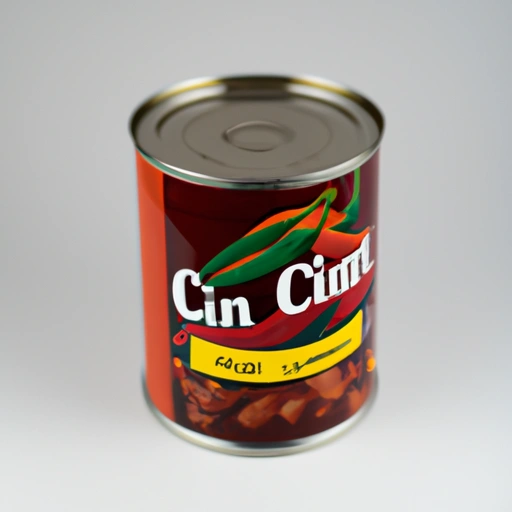Canned Chili
Description

Canned chili is a type of processed food that consists of a spicy stew containing chili peppers, meat (usually beef), and often tomatoes and beans. Other seasonings may include garlic, onions, and cumin, creating a rich, hearty flavor profile. It is conveniently packaged and sealed in a can to preserve its freshness and extend its shelf life, making it a popular pantry staple for those looking to prepare quick and satisfying meals.
Common uses
Canned chili is commonly used as a base for chili con carne, as a topping for hot dogs (known as a 'chili dog'), and as a filling for tacos and burritos. It's also a popular addition to nachos, baked potatoes, and is frequently served alongside rice or cornbread. Its convenience factor makes it a great time-saver for home cooks and professionals alike.
Nutritional value
Calories
A typical serving of canned chili (1 cup or approximately 245g) can range from 200 to 300 calories, depending on the brand and specific ingredients used.
Protein
Canned chili is a good source of protein, with an average serving containing about 15 to 25 grams, thanks to its meat content and beans, if included.
Fat
The fat content in canned chili can vary widely, with an average serving containing anywhere from 5 to 15 grams of fat, largely influenced by the type of meat used.
Carbohydrates
Carbohydrates in canned chili typically come from beans and tomatoes, with a serving containing roughly 20 to 30 grams of carbohydrates.
Vitamins
It often contains vitamins such as vitamin C and B vitamins, particularly B6 and B12, derived from the tomatoes, peppers, and meat.
Minerals
Canned chili provides minerals like iron and potassium, which are essential for blood health and regulating body fluids, respectively.
Health benefits
Canned chili can be part of a balanced diet, providing protein for muscle maintenance and growth, fiber from beans that aids digestion, and a range of vitamins and minerals that support overall health. Its spicy ingredients, like chili peppers, are also known to have anti-inflammatory properties and may boost metabolism.
Potential risks
High sodium content is a concern with many canned products, including chili, which can lead to increased blood pressure. Some brands may also contain preservatives or high levels of saturated fats, which should be consumed in moderation. Always check the label and choose options with lower sodium and without added sugars or excessive additives.
Common recipes
Popular recipes using canned chili include classic chili con carne, chili macaroni casserole, and chili cheese dip. It's also a favored shortcut for making homemade chili fries and chili-topped pizza.
Cooking methods
Canned chili is ready to eat and can be heated on the stovetop or in a microwave. It can also be incorporated into recipes that call for slow cooking or baking.
Pairing with other ingredients
It pairs well with a variety of foods such as cornbread, rice, pasta, and tortilla chips. It's also complemented by toppings like sour cream, cheese, onions, and jalapeños.
Summary
Canned chili is a versatile and convenient ingredient that adds depth and heartiness to a wide range of dishes. It carries the rich flavors of traditional chili con carne and is a time-saving option for many recipes. While it offers nutritional benefits, it's essential to consider the sodium and fat content when selecting a brand. Enjoy it in moderation as part of a diverse and balanced diet.